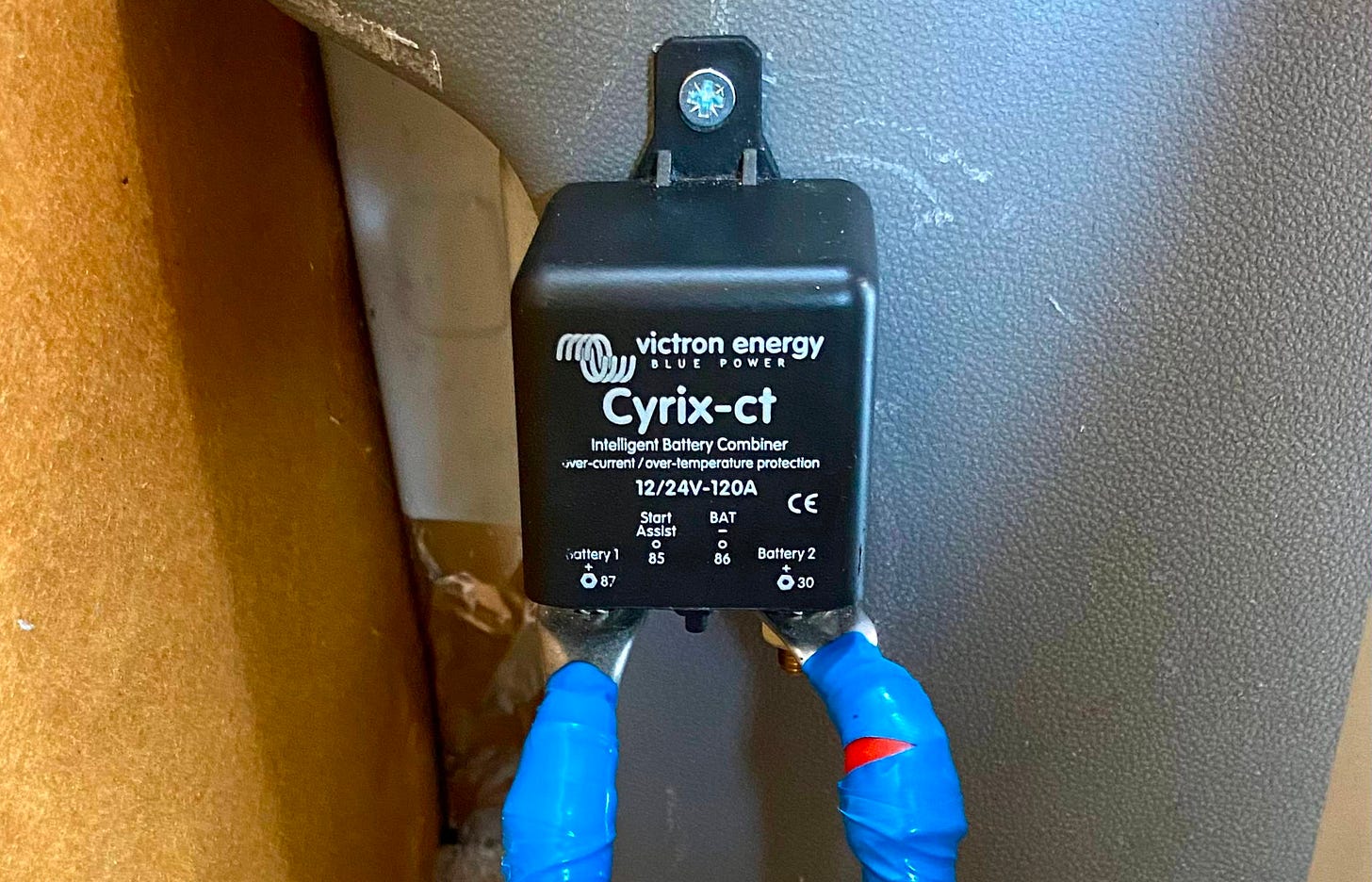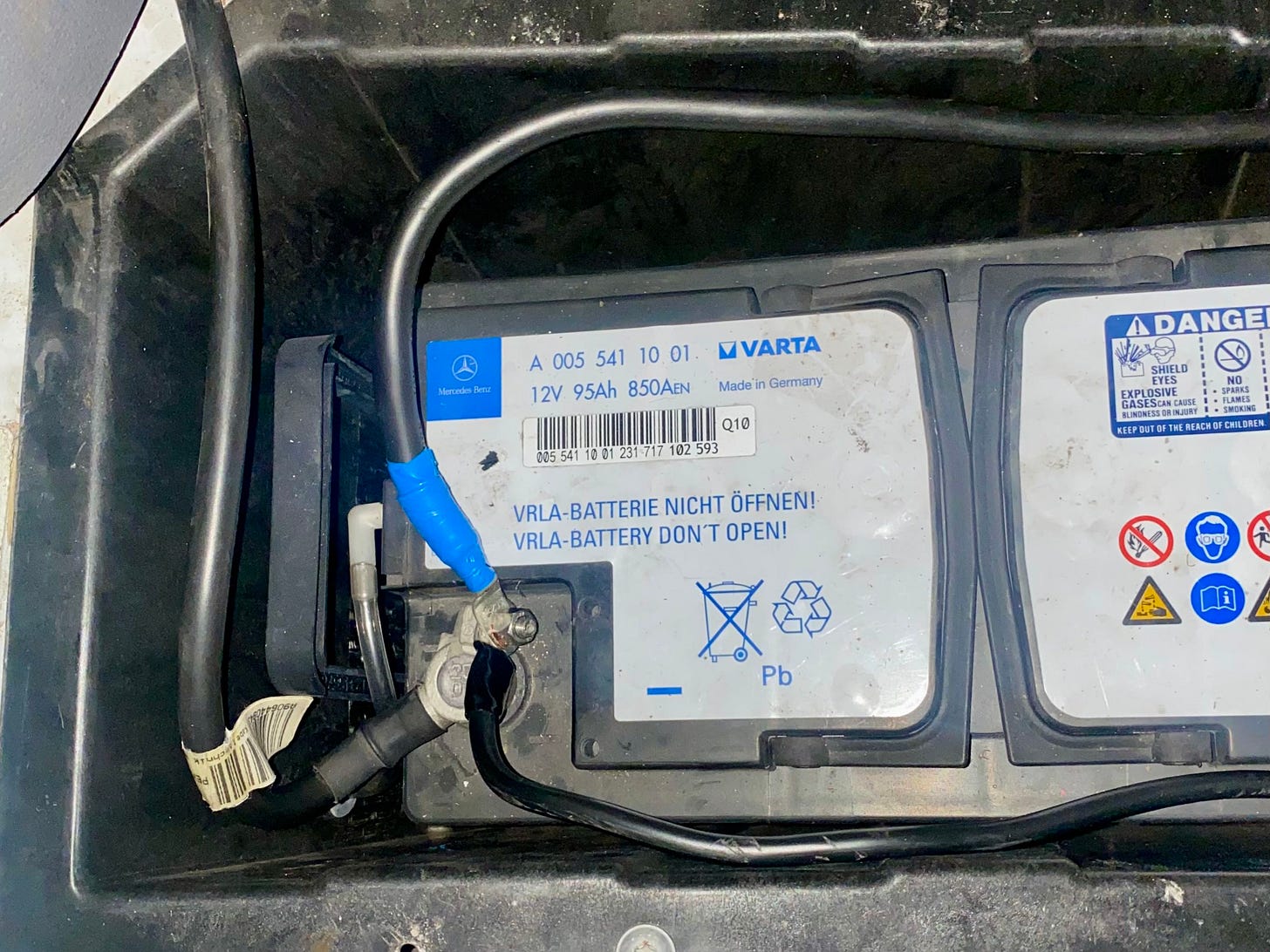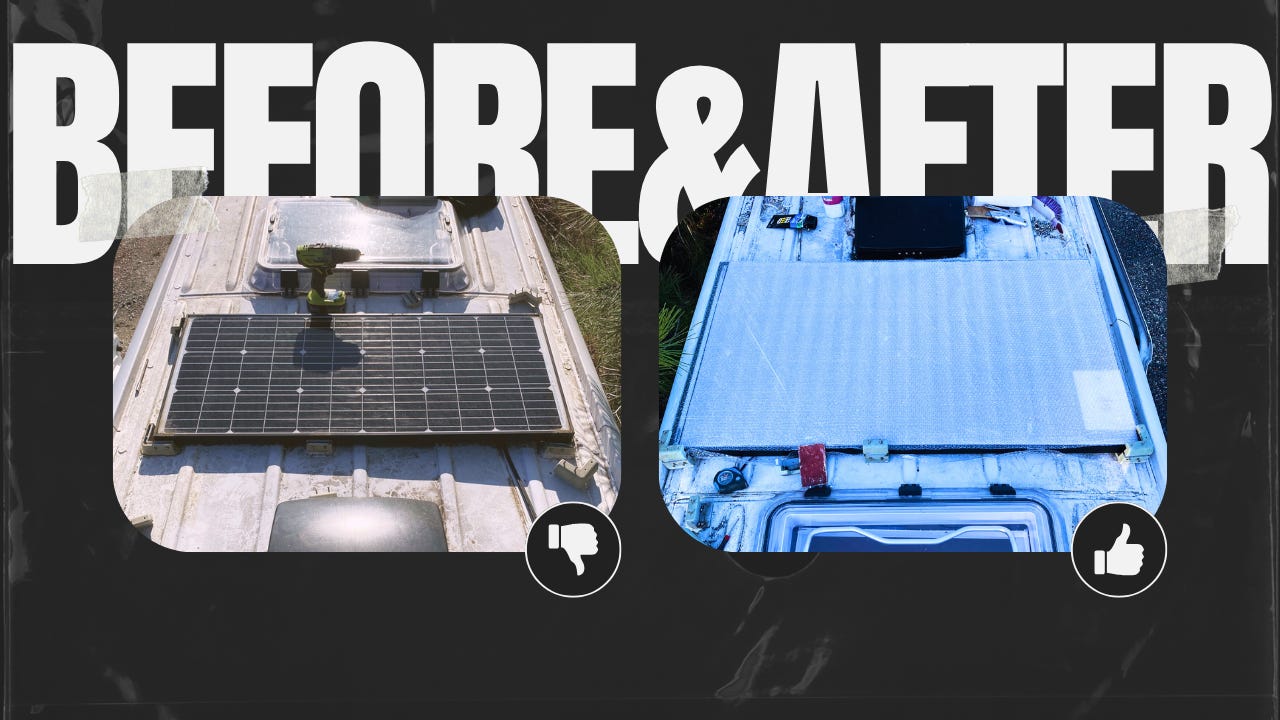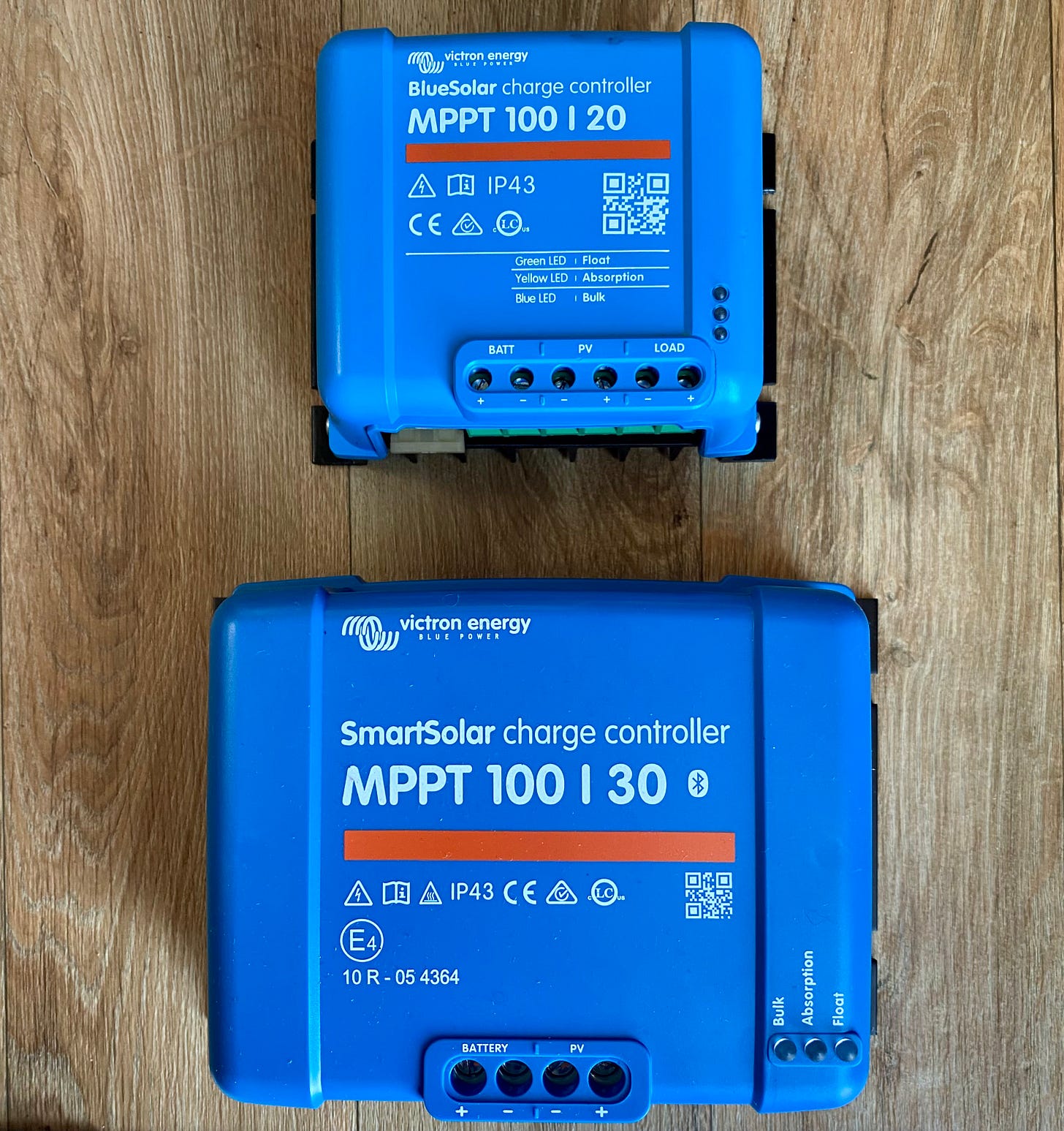17. How we built an off-grid camper electrical system with zero experience
We get this question a lot, so we've decided to tell you everything about our simple setup. We had zero experience before this.
There are many ways to power a campervan, and most setups we see online are actually more advanced than ours, but we love ours, so let me share what it takes to be able to go completely off-grid with your home on wheels.
Battery Type: There are two common types of deep-cycle batteries: AGM (Absorbent Glass Mat) and lithium.
AGM batteries are cheaper but heavier, discharge faster, have a shorter lifespan, and should not be discharged below 50% to prevent damage.
Lithium batteries, specifically LiFePO4 (Lithium Iron Phosphate), are more expensive, but they last much longer, can safely discharge down to 10-20%, charge faster, and are significantly lighter.
Prices vary a lot for the same capacity lithium batteries due to differences in build quality, safety, and the quality of the BMS (Battery Management System). A good BMS prevents overcharging, overheating, and potential fires (we’re heard a lot of horror stories about those).
We opted for high-quality LiFePO4 batteries for safety and longevity.So, we went with two 100Ah lithium batteries instead of one 200Ah battery. This was a deliberate choice: if one battery fails, the other will still function. Initially, I thought about connecting certain devices to one, and others to the second, but in the end, they’re wired in parallel (which means the voltage remains 12V, but the capacity is doubled to 200Ah).
I can track their charge level and charging status via a Bluetooth app, which is an option missing in lower-quality batteries. This was definitely worth the investment because monitoring battery levels is crucial in vanlife.Now that we have batteries, we need ways to charge them.
The first system we installed was a Cyrix relay to charge them from the alternator. A Cyrix relay is a voltage-sensitive relay that connects the starter battery to the auxiliary battery when the alternator is charging and disconnects them when the engine is off.However, it’s not reliable for lithium batteries because it doesn’t provide the correct charging profile. I wrote about this last summer when we were in Venice.
So, we switched to a more reliable DC-DC charger.
So how does that work?
Simple: your van’s alternator charges the starter battery as you drive. Our 30A (amps) DC-DC charger is wired between the starter battery and the auxiliary lithium batteries. When the van is running, the alternator first charges the starter battery. Once it's full, the DC-DC charger starts charging our lithium batteries at a controlled rate. Given our DC-DC charger’s 30A rating, it would take roughly 6.5 hours of driving to fully charge from 0 to 100% (200A/30A = 6.5).We obviously never let our batteries drop to zero, so we need way less time to charge them using this method.
That being said, we’re not always driving, and that’s where the second option comes in: Solar Panels. It’s a classic in vanlife and boatlife too.
We initially installed a 110W, 12V solar panel (recommended by a “pro” and deemed enough), which worked ok but was a bit underpowered.
So, we upgraded to a 210W, 36V solar panel, which dramatically improved performance.By the way, most people focus only on watts, but voltage is just as important when looking at solar panels. In fact, and we learned this just a few months back, higher voltage allows for more efficient power transfer, especially in low-light conditions. We’re in Europe and our panel is flatmounted, so clearly, the 36V is a nobrainer.
Before or alongside installing a solar panel, we also needed an MPPT charge controller (Maximum Power Point Tracking).
Our first MPPT controller was 100/20A (100V max input, 20A output), but it had no Bluetooth capability. We recently upgraded to a 100/30A SmartSolar MPPT, which is more expensive but allows remote monitoring via Bluetooth. The numbers simply mean that the 100V input limit means it can handle panels up to 100V (ours is 36v), and the 30A output limit means it can send a maximum of 30A to the battery (with just one solar panel, that’s more than enough).In other words, the sun hits the solar panel, generating power, which is then regulated by the MPPT charge controller before being stored in our batteries.
Power Consumption & Inverter
Now that we have batteries and charging sources, we added a 1500W pure sine wave inverter. We use this for our food mixer (to make hummus), a small steam iron and for charging small devices (electric shaver, window vacuum).
We only use our inverter once or twice a week.
So, this entire system powers:
6 ceiling LED lights
2 MacBooks
2 phones
1 compressor fridge
1 ceiling fan (used year-round; in winter, it prevents condensation while cooking)
1 12V water pump
1 diesel heater (uses a small amount of electricity for ignition and the fuel pump)
1 USB fan (summer only)
1 drone (charged while driving)
Other small devices (window vacuum, etc.)
It’s sufficient for us, 2 adults who drive no more than a couple of hours per week, based in Western Europe (so cold and rainy all winter). We’ve never had an issue with our “new setup”, but we did experience 2 shortages before upgrading to a proper DCDC charger in the summer.
Pro tip: To conserve power, we charge our MacBooks at cafés or libraries whenever possible, as they are the biggest energy drain (perhaps along with the fridge). Phones and the drone are charged while driving, directly from the van battery.
Future plans
We’d like to add another 100Ah battery in the future, but that will have to wait.
Thanks for reading!
Peace!
T_







What I found most fascinating reading this was the bit about the solar panels. Whenever I buy a house one day, I will want to buy solar panels to help with being more efficient.
So cool, T! I learned so much reading this. Sounds like you have a great setup!
We still have to redo the battery & solar panel situation on the boat. That’s my husband’s task, but now I’ll know what we’re doing. Haha. We’re going to be super limited though because we’ll only have solar, so hopefully we can keep the necessities running (no fridge, no AC, and still perhaps only 1 MacBook charge each per day 😬)